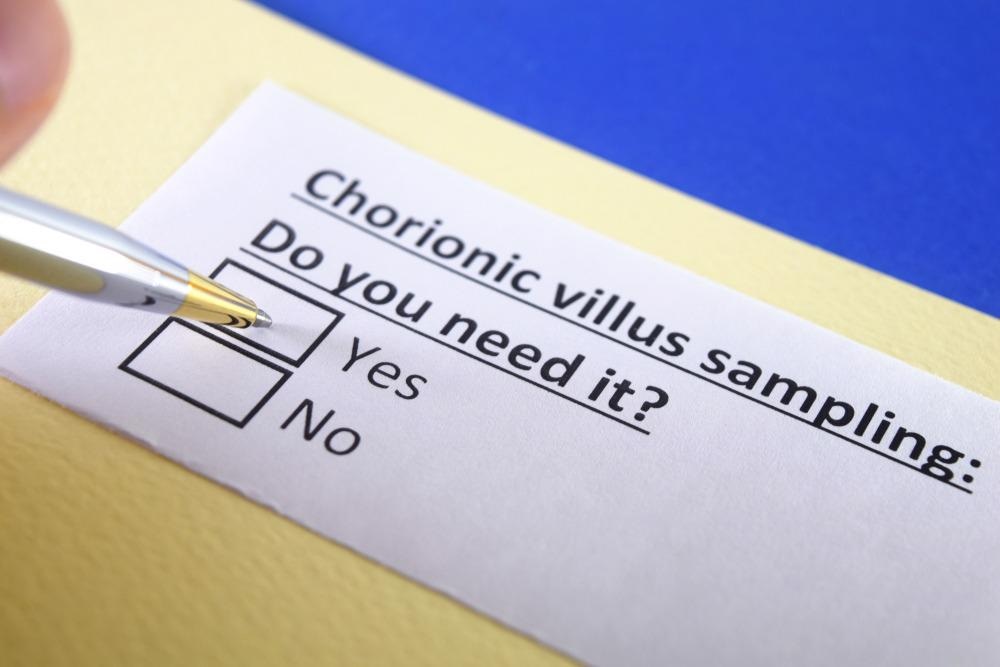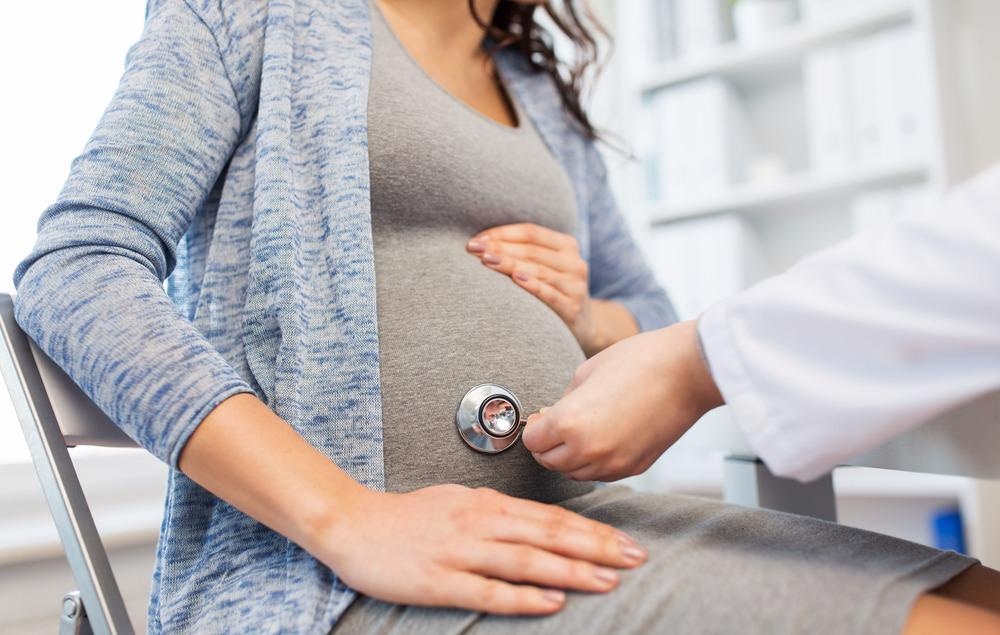Introduction
The Chorionic Villus Sample Procedure
Risks and Contraindications of Chorionic Villus Sampling
Preterm Labor
Fetal Limb-Reduction Abnormalities and Chorionic Villus Sampling
References
Chorionic villus sampling is a prenatal diagnostic test performed for prenatal genetic testing involving a biopsy of placental tissue between 10 to 13 weeks gestation. The tissue harvested is the placental villi.
According to the American College of Obstetrics and Gynecology, prenatal assessment for aneuploidy should be offered to women of all ages. Not all abnormalities can be identified by prenatal genetic testing; therefore, it focuses on reproductive goals, patient’s risk, and preferences. The indications for chorionic villus samples include:
- Abnormal genetic screening on a non-invasive prenatal screening (NIPS), abnormalities on ultrasound, and first-trimester screening
- Previous child with a structural congenital disability, autosomal trisomy, or sex chromosome aneuploidy
- Older parental age
- Carriers of chromosomal rearrangements
- Parental aneuploidy (presence of an abnormal number of chromosomes) and aneuploidy moccasin (aneuploidy in the presence of two or more cell lines of different genetic or chromosomal material within one individual)
- Parental carriers of a genetic disorder, such as Sickle Cell Disease, Cystic Fibrosis, or Neurofibromatosis

Image Credit: Yeexin Richelle/Shutterstock.com
The Chorionic Villus Sample Procedure
The chorionic villus sampling method involves the collection of placental tissue followed by processing to ensure that little or no maternal tissue can contaminate the fetal tissue.
Placental villi are collected via the transabdominal or transcervical approach, i.e., the abdominal cavity or the cervix. In the case of transcervical chorionic villus sampling, a catheter is inserted through the cervix and is guided to the placenta using ultrasound. In the transabdominal procedure, a needle is inserted into the placenta using ultrasound guidance. This is more similar to the approach used in amniocentesis. In total, 15–25 mg of chorionic villi are obtained.
A comparison of the trans abdominals on the transcervical methods demonstrates no significant difference in the rate of fetal loss between the two. The most influential factor regarding the route via which chorionic villus sampling is performed is operator preference on the position of the placenta. The transabdominal route is preferred when the placenta is higher or in the fundal location (at the top of the uterus). The transcervical route is selected when the placenta is in a posterior location.
However, chorionic villus sampling is considered to be advantageous over other prenatal diagnostic tests, namely amniocentesis. Chorionic villus sampling results are available earlier in pregnancy than amniocentesis results, which reassures parents when results are normal. In cases of abnormal outcomes, earlier and safe pregnancy termination is possible. Chorionic villus samples are also cellular and provide larger amounts of DNA for direct analysis combat, allowing for a more rapid turnaround.
There is a difficulty associated with collecting ‘clean’ samples; as such, it is necessary to test the DNA mother and the villus sample. This will allow diagnosticians to verify that the chronic villus sample DNA is fetal and not predominantly maternal or a mixture of the two.
Risks and Contraindications of Chorionic Villus Sampling
Overall, chorionic villus sampling is a safe prenatal testing technique. However, as is the case with most invasive procedures, there is a risk of complications. Among the complications, vaginal bleeding is rare when chorionic villus sampling is performed via the abdomen; the prevalence rate is between 7 and 10% via the transcervical root. Other complications of chorionic villus sampling include:
- Chorioamnionitis: this is an infection of the placenta and the amniotic fluid (incidence rate of <1 in 1000)
- Acute rupture of membranes: a rupture of the amniotic sac
- Oligohydramnios: a deficiency in the volume of amniotic fluid
- Preterm rupture of membranes: rupture of the fetal membranes before the onset of labor

Image Credit: Syda Productions/Shutterstock.com
Preterm Labor
Overall, the procedure-related loss rate after CVS is reported to be 0.22% (95% CI, –0.71% to 1.16%), as quantified by a recent systematic review and similar to amniocentesis. Moreover, the additional risk of miscarriage following amniocentesis is around 1%. The most accurate estimate of the amniocentesis-induced risk of miscarriage comes from a 1986 Danish randomized trial. 4,606 women were randomized; all had a low risk of miscarriage and were between 24 and 35 years. They were subjected to amniocentesis using a needle under continuous real-time ultrasound guidance. The amniocentesis group experienced a loss rate exceeding the control group by 1%.
Fetal Limb-Reduction Abnormalities and Chorionic Villus Sampling
Many reports have documented the possibility of an association between CVS and limb-reduction defects. The first report documented four infants with oromandibular-limb hypogenesis and one with terminal transverse limb reduction defect.
However, the World Health Organization of 200,000 procedures found no significant associations between the procedure and the incidence of limb-reduction defects. Given the controversy, those subject to the technique are informed of the rusk (if any exists ) of <1 in 3000 in procedures performed before 70 days.
References:
- Jones TM, Montero FJ. Chorionic Villus Sampling. [Updated 2021 Oct 9]. In: StatPearls [Internet]. Treasure Island (FL): StatPearls Publishing; 2021 Jan-. Available from: https://www.ncbi.nlm.nih.gov/books/NBK563301/
- Alfirevic Z, Navaratnam K, Mujezinovic F. (2017) Amniocentesis and chorionic villus sampling for prenatal diagnosis. Cochrane Database Syst Rev. doi:10.1002/14651858.CD003252.pub2.
- Royal College of Obstetricians and Gynaecologists. Amniocentesis and Chorionic Villus Sampling. Green-top guideline No.8. RCOG Press: London, 2010.
- Wulff CB, Gerds TA, Rode L, et al. (2016) Danish Fetal Medicine Study Group. Risk of fetal loss associated with invasive testing following combined first-trimester screening for Down syndrome: a national cohort of 147,987 singleton pregnancies. Ultrasound Obstet Gynecol. doi: 10.1002/uog.15820.
- Akolekar R, Beta J, Picciarelli G, et al. (2015) Procedure-related risk of miscarriage following amniocentesis and chorionic villus sampling: a systematic review and meta-analysis. Ultrasound Obstet Gynecol. doi: 10.1002/uog.14636.
Further Reading
Last Updated: Jun 1, 2022